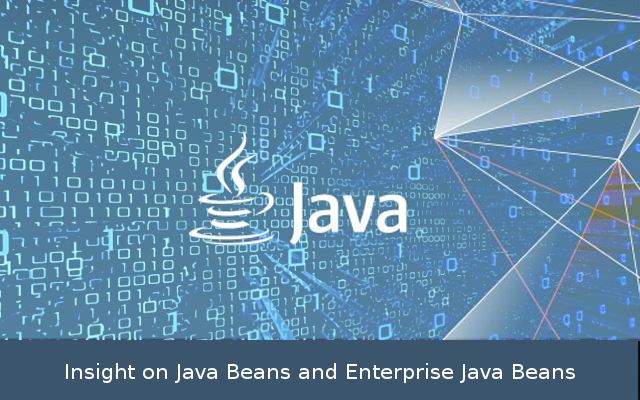Insight on Java Beans and Enterprise Java Beans
 Java is the most trusted and tested technology of the industry. It has been ruling the industry for more than two decades. This is because of the versatile nature of Java. Java developers can develop any type of application like hardware programming, desktop application development, web development, game development or even smart phone app development. Moreover Java is platform independent in nature i.e., we can run it on any platform. Hence there is a tremendous demand of Java developer in the industry. With time Java has modified itself to meet the expectation of the industry and hence it has been treated as the evergreen technology of the industry. To make the things seamless, there are many Java frameworks that help Java developers in building enterprise standard software applications for different domains. Today we will discuss to measure components of Java i.e., Java beans and enterprise Java beans.
Java is the most trusted and tested technology of the industry. It has been ruling the industry for more than two decades. This is because of the versatile nature of Java. Java developers can develop any type of application like hardware programming, desktop application development, web development, game development or even smart phone app development. Moreover Java is platform independent in nature i.e., we can run it on any platform. Hence there is a tremendous demand of Java developer in the industry. With time Java has modified itself to meet the expectation of the industry and hence it has been treated as the evergreen technology of the industry. To make the things seamless, there are many Java frameworks that help Java developers in building enterprise standard software applications for different domains. Today we will discuss to measure components of Java i.e., Java beans and enterprise Java beans.
Java beans: Java beans are classes that encapsulate a number of objects into a single bean. Usually it has two methods i.e., getter and setter methods. Through these two methods, we can interact with different events and properties of the application to give it an interactive look and feel. Through getter we can get some value from the application and with setter we can set it to the Java beans and then we can use it in the application. We can customise the user interface of the application through the Java bean without any hassle. We can also change different property values of the application for improve user experience. Well the Java bean is like a blank paper and it can be reusable in the application as a component.
Enterprise Java Beans: Enterprise Java beans are just like the Java beans with some additional features to make the development process of a higher standard. It is helpful in developing business standard Java applications. It is a server side component to encapsulate the business logic of a specific application. It helps in transition processing, concurrency control, asynchronous method calling, job scheduling and deployment of software components in server side etc. It has received a tremendous support and popularity from the industry in very less span of time due to its magical essence. Well it is just like Java beans along with an additional method i.e., a public constructor. This helps in developing highly optimised and efficient Java applications. Let us discuss few differences between Java beans and enterprise Java beans for better understanding in short.
Difference between Java Beans and EJB: EJB is always a remote object and it is invisible. On the other hand Java beans may or may not be visible depending upon the requirement of Java developers. Though Java beans can also be implemented in server side but it is always efficient to be implemented on client side only by the Java developers. On the other hand EJB is more powerful in handling server side components. Well Java beans does not have any types whereas enterprise Java beans are of two types i.e., entity beans and session beans. EJB may be transitional but Java beans don’t support transitions. Hence we can say Java beans is for customising user objects in local where as EJB is for high standard Java applications that needs server side customisation with more power and efficiency.
Mindfire Solutions has been providing Java development services to its esteemed clients for over 15 years now. If you are exploring about outsourcing Java development Services or hire Java developers, please feel free to get in touch with Mindfire Solutions now and you can avail the limited period Risk-Free Trial Offer.
